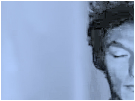by ABBIGAIL BALDYS, Editorial Assistant
HOW do our inherited landscapes shape the way we perceive the natural?
“Hey, lawn! Hey, rain! I’m the unreal breath of this garden.”[2]
“the dried leaves move under the glass; they’re not as red as one would think.”[2]
BUT when attending to the natural in this intense way—Carpentier’s estado limite, Breton’s “rosemary of my extreme pallor”—WHAT does it mean for the surrealist's perception to be marked by extremes?
Whose tongue is made out of amber and polished glass
Whose tongue is a stabbed wafer
The tongue of a doll with eyes that open and shut
Whose tongue is an incredible stone [3]
When surrealists look out . . .
toward the stone, the leaves, or a fog’s bright shoulders, its gray miles . . .
Abbigail Baldys
Editorial Assistant
Interact with Abbigail on Twitter: @SP_AbbigailB
[1] Carpentier, Alejo. “De lo real maravilloses Americano.” Tientos y Diferencias. Montevideo: Arca, 1967. pp 96-112.
[2] Breton, Andre, and Mark Polizzotti. “The Forest in the Axe.” Andre Breton: Selections. Translated by Zack Rogow and Bill Zavatsky. Berkeley: U of California, 2003. 83-84.
[3] Breton, Andre, and Mark Polizzotti. “Free Union.” Andre Breton: Selections. Translated by Zack Rogow and Bill Zavatsky. Berkeley: U of California, 2003. 89-91.







 RSS Feed
RSS Feed
